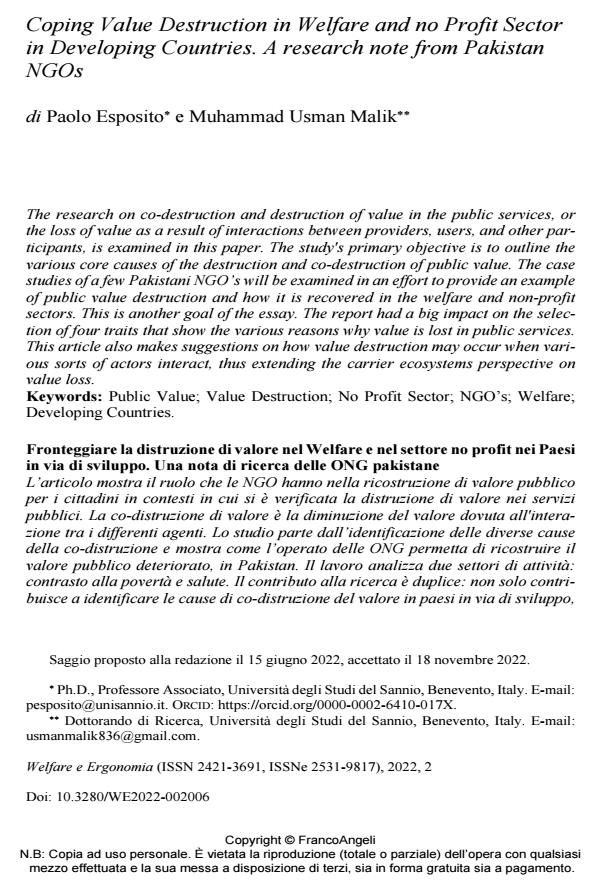Coping Value Destruction in Welfare and no Profit Sector in Developing Countries. A research note from Pakistan NGOs
Journal title WELFARE E ERGONOMIA
Author/s Paolo Esposito, Muhammad Usman Malik
Publishing Year 2023 Issue 2022/2
Language English Pages 15 P. 73-87 File size 285 KB
DOI 10.3280/WE2022-002006
DOI is like a bar code for intellectual property: to have more infomation
click here
Below, you can see the article first page
If you want to buy this article in PDF format, you can do it, following the instructions to buy download credits

FrancoAngeli is member of Publishers International Linking Association, Inc (PILA), a not-for-profit association which run the CrossRef service enabling links to and from online scholarly content.
L’articolo mostra il ruolo che le NGO hanno nella ricostruzione di valore pubblico per i cittadini in contesti in cui si è verificata la distruzione di valore nei servizi pubblici. La codistruzione di valore è la diminuzione del valore dovuta all'interazione tra i differenti agenti. Lo studio parte dall’identificazione delle diverse cause della co-distruzione e mostra come l’operato delle ONG permetta di ricostruire il valore pubblico deteriorato, in Pakistan. Il lavoro analizza due settori di attività: contrasto alla povertà e salute. Il contributo alla ricerca è duplice: non solo contribuisce a identificare le cause di codistruzione del valore in paesi in via di sviluppo, ma anche evidenzia che la value co-destruction può essere superata se le ONG sono in grado di fornire servizi sostitutivi ai cittadini.
Keywords: Public Value; Value Destruction; No Profit Sector; NGO’s; Welfare; Developing Countries.
Paolo Esposito, Muhammad Usman Malik, Coping Value Destruction in Welfare and no Profit Sector in Developing Countries. A research note from Pakistan NGOs in "WELFARE E ERGONOMIA" 2/2022, pp 73-87, DOI: 10.3280/WE2022-002006